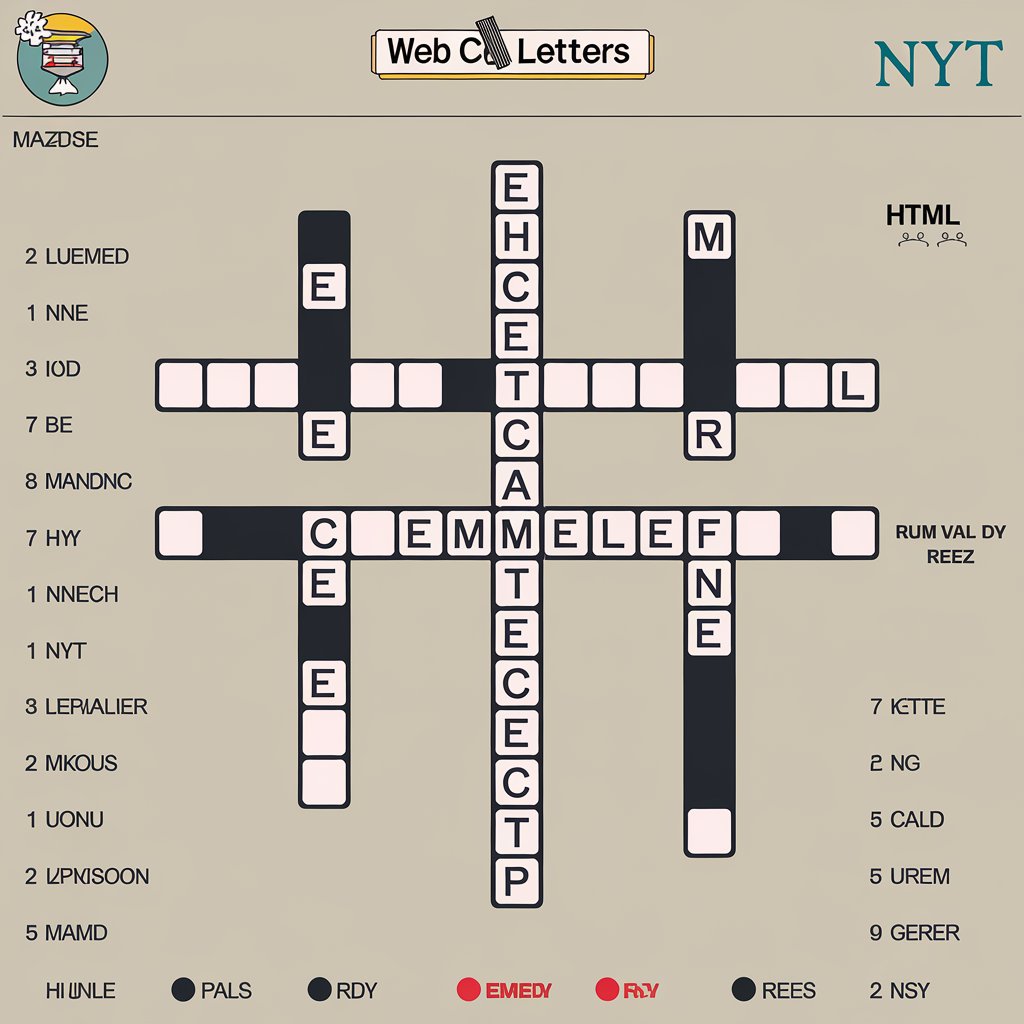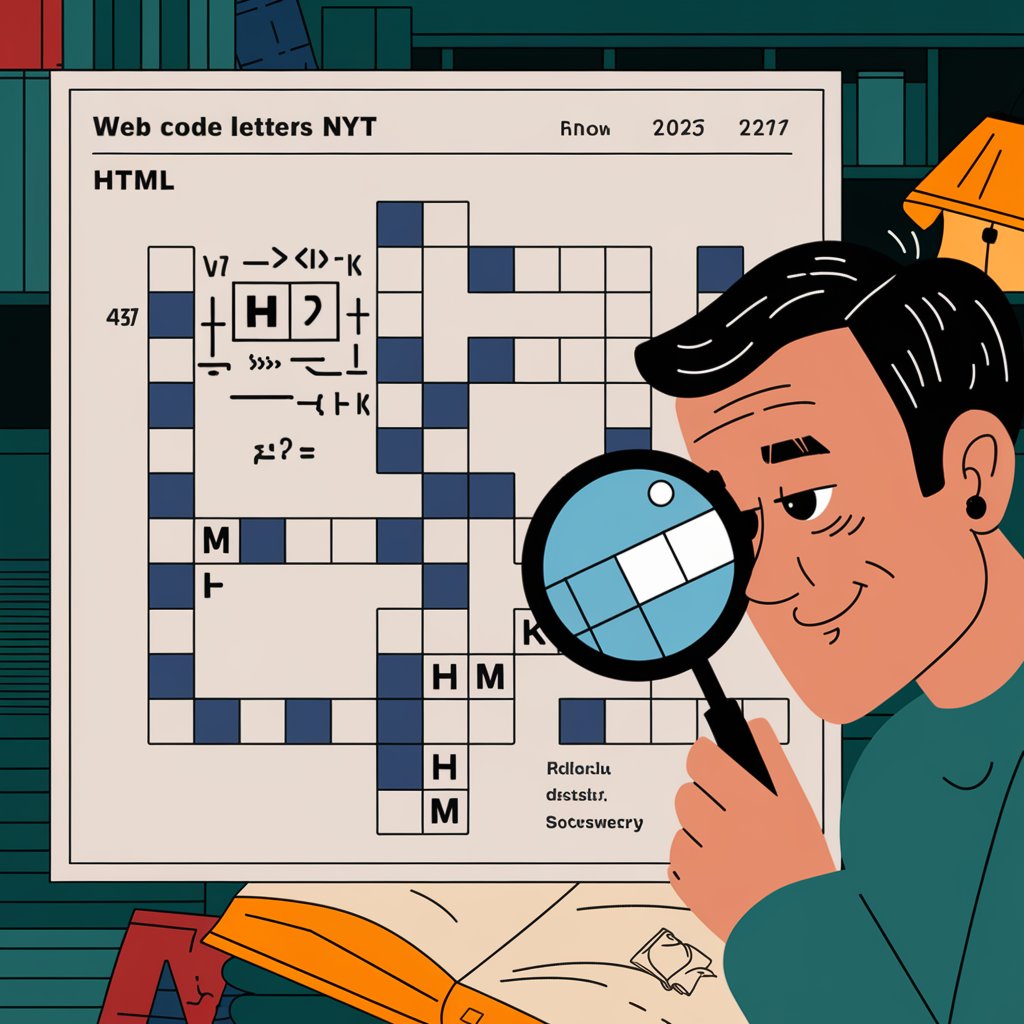What Does “Web Code Letters NYT” Mean? Easy Explanation for Crossword Fans

Web code letters NYT often appear in crossword puzzles, leaving many people wondering what they mean. If you’ve ever come across this clue and felt stuck, you’re not alone! Crossword puzzles can be tricky, but with a little help, you can solve them with confidence.
Many times, “Web code letters NYT” refers to the abbreviation HTML, which stands for HyperText Markup Language. This is the coding language used to create websites. But why does this clue appear in the NYT Crossword? Let’s explore the meaning behind it and how you can solve similar clues in the future.
Many crossword puzzles use short tech-related terms because they fit well in the puzzle grid. If you see this clue, think about common web-related abbreviations like HTML, URL, or CSS. These are often the best guesses for solving the puzzle quickly.
Crossword puzzles test your knowledge in different subjects, including technology. By learning common tech terms, you can improve your solving skills and complete more puzzles without difficulty.
Why Does “Web Code Letters NYT” Often Mean HTML?
HTML is the main language used to build websites. It helps in structuring web pages by organizing text, images, and links. Because of its importance, HTML is a frequent answer in crosswords when referring to web coding.
The New York Times (NYT) Crossword often includes clues related to modern technology. Since HTML is a well-known term, it fits perfectly in many puzzles. Crossword creators prefer short, widely recognized words to make the game enjoyable for players.
If HTML does not fit in the puzzle, consider other common web-related terms. Abbreviations like CSS (Cascading Style Sheets) or URL (Uniform Resource Locator) might also be correct answers.
Other Possible Answers for “Web Code Letters NYT”

Although HTML is the most common answer, other web-related terms sometimes appear in NYT Crossword puzzles. Here are a few alternatives:
- CSS: Used for designing web pages.
- URL: The address of a website.
- HTTP: A protocol for accessing web pages.
- WWW: Short for World Wide Web.
If you see this clue in a crossword, check the number of boxes in the answer. This will help you determine which abbreviation fits best.
How to Solve Web-Related Crossword Clues Easily
Many crossword solvers get stuck on technical terms. To make solving easier, here are some tips:
- Learn common abbreviations: HTML, CSS, URL, and HTTP appear often in crosswords.
- Look at the puzzle’s theme: If the crossword has a tech theme, expect more web-related terms.
- Use context clues: Sometimes, surrounding answers can help you guess the correct word.
- Keep a crossword dictionary: A quick reference guide can help you find tricky answers fast.
With practice, solving these clues will become much easier over time.
Common Tech Terms Found in NYT Crossword Puzzles
Tech terms are popular in crossword puzzles because they are short and widely known. Here are some that often appear:
- Byte: A unit of digital data.
- Cache: A storage area for quick data access.
- App: Short for application, commonly used in mobile tech.
- AI: Stands for artificial intelligence.
Recognizing these words will help you complete puzzles faster and with more confidence.
HTML and Its Role in Web Development Explained Simply
HTML is the backbone of every website. It tells web browsers how to display text, images, and links on a page. Without HTML, websites would not exist.
This coding language uses tags to format content. For example, <h1> is used for headings, while <p> is used for paragraphs. These tags help in organizing information properly.
Since HTML is essential for the internet, it is a common crossword clue. If you understand its role, solving related clues will be much easier.
Popular Abbreviations Used in Crossword Puzzles
Many abbreviations appear frequently in crosswords. Some of the most common include:
- ATM: Automated Teller Machine.
- NASA: Space agency in the U.S.
- IQ: Intelligence Quotient.
- NYC: Short for New York City.
When solving a crossword, always consider abbreviations as possible answers. They are short and fit well into puzzle g
Tips to Solve NYT Crossword Faster and Smarter

Improving your crossword-solving skills takes time. Here are some helpful tips:
- Start with easy clues: Solve the simplest clues first to gain confidence.
- Look for repeated words: Some answers appear in multiple puzzles.
- Use online tools: Crossword solver websites can help when you’re stuck.
- Practice daily: The more you solve, the better you get.
With patience and practice, you’ll become a crossword expert in no time.
Fun Facts About Web Codes and Their Uses
Web codes are a big part of the internet. Here are some interesting facts:
- The first website was created in 1991 using HTML.
- CSS was introduced in 1996 to improve website design.
- JavaScript makes websites interactive and dynamic.
- There are over 1.5 billion websites in the world today.
Knowing these facts can make crossword-solving more enjoyable and educational.
The History of Web Coding and Why It Matters
Web coding has come a long way since the early days of the internet.
In the 1990s, websites were simple, using only HTML. As the internet grew, CSS and JavaScript were introduced to improve design and functionality. Today, coding languages like Python and PHP help create powerful websites.
Since web coding is an important part of technology, crossword puzzles often include related terms. Learning about web development can help in solving these puzzles more easily.
Tips to Solve NYT Crossword Faster and Smarter
Improving your crossword-solving skills takes time. Here are some helpful tips:
- Start with easy clues: Solve the simplest clues first to gain confidence.
- Look for repeated words: Some answers appear in multiple puzzles.
- Use online tools: Crossword solver websites can help when you’re stuck.
- Practice daily: The more you solve, the better you get.
With patience and practice, you’ll become a crossword expert in no time.
Fun Facts About Web Codes and Their Uses
Web codes are a big part of the internet. Here are some interesting facts:
- The first website was created in 1991 using HTML.
- CSS was introduced in 1996 to improve website design.
- JavaScript makes websites interactive and dynamic.
- There are over 1.5 billion sites in this present reality.
Knowing these facts can make crossword-solving more enjoyable and educational.
The History of Web Coding and Why It Matters
Web coding has come a long way since the early days of the internet.
In the 1990s, websites were simple, using only HTML. As the internet grew, CSS and JavaScript were introduced to improve design and functionality. Today, coding languages like Python and PHP help create powerful websites.
Since web coding is an important part of technology, crossword puzzles often include related terms. Learning about web development can help in solving these puzzles more easily.
Conclusion
Solving crossword puzzles can be fun and rewarding, especially when you understand tricky clues like “web code letters NYT.” Knowing common web-related abbreviations such as HTML, CSS, and URL will help you find answers quickly. The more puzzles you solve, the better your skills will become.
Keep practicing and learning new words every day. Crossword puzzles are a great way to improve your thinking, memory, and problem-solving skills. With time, you’ll become faster at solving even the most challenging clues!
FAQs
A: It usually refers to HTML, the coding language used for websites. Other possible answers include CSS, URL, or HTTP.
A: HTML is the main language for building web pages, making it a popular choice for crossword puzzles.
A: Try other web-related abbreviations like CSS, URL, HTTP, or WWW, depending on the number of spaces in the puzzle.
A: Learn common abbreviations, practice daily, and use crossword-solving tools when needed.
A: You can use online crossword solvers, dictionaries, or forums where puzzle lovers discuss answers.




